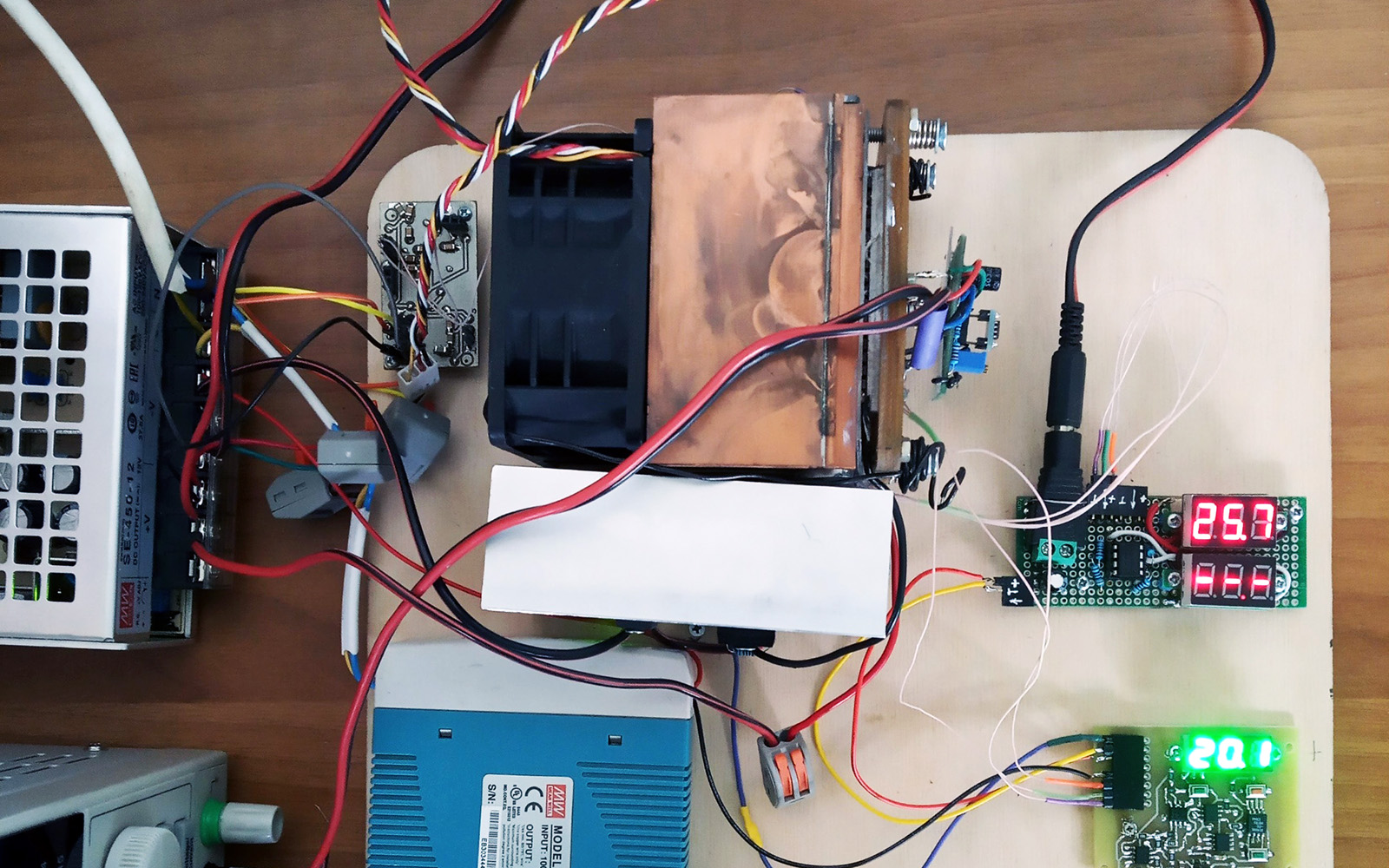MAI student elaborates a laser diode thermostabilizing system

Laser diodes are modern electro-optical devices that are applied in many scientific and technological areas. Nowadays they are widely used in fibre-optic systems, metalworking, measuring equipment, and in high-brightness broadband radiation sources based on optical discharges. Just for the latter, Elizaveta Yatsenko, the student of the MAI Department of Physics of Structural Materials, Institute No. 11, Materials Science and Technology of Materials, developed the thermostabilizing system. The device may be used to maintain the set temperature of laser diodes, as well as other low-power (thermal power up to 80W) devices that need it.
The girl created the experimental sample and proved that it not only works but even surpasses the existing analogues.
The operating temperature range, that does not contradict the operating conditions of the devices, usually lies in the range from 10 to 50 degrees Celsius. In many cases, thermal stabilization of a laser diode can be carried out using a heat exchanger cooled by air or water. But in some cases, there is the problem of providing much more accurate temperature stabilization, and the possibility of its operational change.
While being in her second year, the girl took up the project. It was when the Department of Physics of Structural Materials of Moscow Aviation Institute organized an excursion for students to the Institute for Problems of Mechanics. A.Y. Ishlinsky Russian Academy of Sciences and Elizaveta was very impressed by the laboratory of laser discharges. She decided to try to start her diploma there, but she got overwhelmed by scientific activity after all.
“The global idea is as follows. Obtaining an optical discharge is a rather complex and dangerous experiment that requires a large number of different equipment, as well as the availability of highly specialized knowledge and skills. But such a small and high-intensity broadband radiation source may also be useful by other area experts, for example, by biologists. Therefore, it would be great to create a device that allows you to get an optical discharge by pressing a few buttons. My work is the development of a thermal stabilization system – and it is only a small part of this project. The idea was to create a simple and effective system that would perform the functions that are required for the device exactly,” says Elizaveta.
In her development, the girl used as a cooling element a thermoelectric module based on the Peltier effect. To achieve the required temperatures, it is enough to place it between the laser diode and the heat exchanger, applying voltage and ensuring intensive heat removal from its hot side, for example, via using a fan.
As for today, most thermal stabilization systems are universal and designed to solve a wide range of tasks, therefore, they are not always convenient to use. So, the efficiency of the work is influenced by the large dimensions of the product, as well as the not very high stabilization rate due to the discreteness of the received information about the temperature. Therefore, Elizaveta decided to develop the most simple and affordable device.
After conducting experiments and obtaining the necessary data, the MAI student created a thermostabilizing system that includes the thermoelectric module and the feedback circuit based on a proportional-integral controller, as well as a cooling system consisting of a heat exchanger, a fan, and a pulse-width modulation circuit. Elizaveta also developed a scheme for automatic control of the rotation speed of up to three fans, which are provided in the laser-plasma source. The circuit works according to the algorithm borrowed from the principles of server cooling systems. The created circuits were recreated in the form of printed circuit boards.
Other important advantages over factory analogs are the rate of thermal stabilization due to the use of analog components, overall dimensions (57×48×15 mm), and assembly from a smaller number of available elements. Elizaveta managed to achieve the accuracy of thermal stabilization with an error of no more than 0.1 degrees Celsius and temperature overshoot when changing the mode - no more than 1 degree Celsius.
“The device is designed specifically for laser-plasma source of broadband radiation. It would be strange if one student's project surpassed the work of a whole team of experienced engineers. My device is just a compilation of existing technologies: Peltier elements have been used for cooling laser diodes for a long time, and everyone familiar with electronics knows about PID controllers. But part of my job was to tailor all this to a specific task. For example, earlier OWEN TRM101 was used as a PID controller, but it had unsuitable dimensions and not a very high rate of thermal stabilization,” notes the young inventor.
The finished prototype of the system was successfully integrated into the work of the laser discharge laboratory in summer 2020. For the future, the author plans to build the prototype into a laser-plasma source of broadband radiation, which is now at the assembly stage. This work is carried out in cooperation with the State Scientific Center for Applied Microbiology and Biotechnology on experimental research of the bactericidal effectiveness of short-wave UV generated by a laser-plasma source concerning multi-species biofilms.
